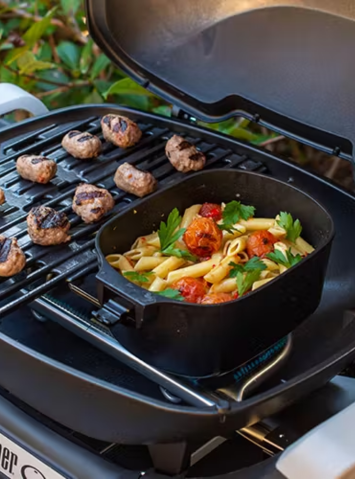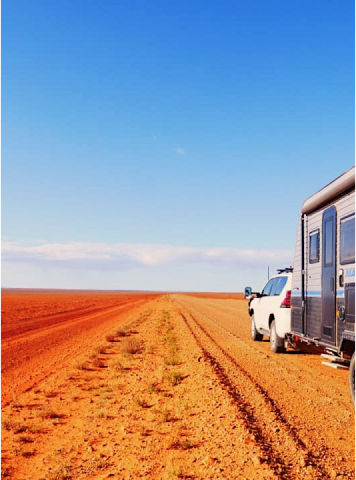Our Guide to Summer vs Winter Swags
14th Mar 2023
Whether you're a seasoned camper or just getting started, the right camping gear can make or break your camping trip. A swag is a portable sleeping unit that offers shelter and comfort to campers.
However, with so many options on the market, deciding which one to choose can take time and effort. This guide will look at the differences between summer and winter swags and provide the information you need to make an educated decision.
We'll cover everything you need to know, from the materials used to the design features, to help you choose the best swag for your camping needs. So, let's get started and determine which swag will best suit your camping style, summer or winter.
Understanding the Differences Between Summer & Winter Camping
Summer and winter camping are very different, so understanding these differences is critical before selecting a swag. When comparing summer and winter camping, consider the following factors:
Summer camping is distinguished by warm and sunny weather, whereas cold temperatures, snow, and rain characterise winter. This can have a significant impact on the type of swag you require.
Summer campers typically wear light, breathable clothing, whereas winter campers must layer up with warm, insulated clothing. Winter campers also require specialised equipment such as snowshoes, ice axes, and crampons.
Summer has longer daylight hours, giving you more time to enjoy outdoor activities. Winter, on the other hand, has shorter daylight hours, so activities must be planned accordingly.
Terrain and scenery: The terrain and scenery vary greatly between summer and winter. Summer campers might enjoy hiking through green forests, whereas winter campers prefer snowshoeing through white landscapes.
Materials Used in Summer vs Winter Swags
Summer and winter swag materials can differ significantly because they must accommodate different temperature ranges and weather conditions. Here are some materials that are commonly used in summer and winter swags:
Summer swags are typically lightweight, breathable materials like cotton, canvas, or polyester. These materials provide good ventilation and allow air to circulate through the swag, which aids in keeping you cool on hot summer nights.
On the other hand, winter swags are constructed of thicker, more insulating materials such as nylon, polyester, or Gore-Tex. These materials trap body heat and keep you warm during cold weather.
Insulation: Additional insulation layers, such as synthetic or down fill, are frequently used in winter swags to provide warmth and insulation.
Winter swag flooring is typically made of thicker, more durable materials like PVC, which can withstand rough terrain and protect against moisture and cold temperatures.
Swag zippers can also vary between summer and winter models. Winter swags frequently feature larger, stronger zippers that are easier to operate while wearing gloves.
Design Features of Summer & Winter Swags
Summer Swags
- Materials that are lightweight and breathable to keep you cool.
- Insect-proof mesh is built in to keep the bugs out.
- A double-layered roof provides shade and ventilation.
- Built-in fly screen for sun and wind protection.
Swags for Winter
- Insulation and warmth are provided by heavier fabric or canvas.
- To keep you dry, the base is waterproof.
- For added warmth, use an inner quilt or lining.
- A high-quality zippered closure keeps the cold out.
Swags for Both Summer & Winter
- High-quality, long-lasting materials that can withstand the elements.
- Simple to assemble and disassemble.
- Adequate ventilation is required to avoid condensation build-up.
- It's spacious and comfortable enough to sleep in.
- For transportation, it is small and easy to pack.
Benefits & Drawbacks of Summer & Winter Swags
Both summer and winter swags have distinct advantages and disadvantages that should be considered before purchasing. Here are some advantages and disadvantages of each type of swag:
Summer Swags
Pros:
- Transportable and lightweight.
- Breathable materials for cool sleep-in hot weather.
- The reasonable price range.
- It can be used for outdoor events, festivals, and camping.
Cons:
- There needs to be more insulation and weather protection.
- In colder weather, use is restricted.
- Winter swags may be shorter.
Winter Swags
Pros:
- Insulated and made for cold weather use.
- Materials that are tough enough to withstand rough terrain and bad weather.
- In cold weather, it adds warmth and comfort.
- It can be used for various outdoor activities, including mountaineering and winter sports.
Cons:
- They are heavier and bulkier, making transportation more difficult.
- Summer swags are more expensive.
- It may be less comfortable to sleep in during hot weather.
Choosing the Right Swag for Your Camping Needs
Choosing the right swag for your camping needs can make all the difference in your camping experience. Here are some factors to consider when selecting a swag:
Climate and weather conditions: Consider the weather conditions in which you intend to camp, as this will influence the type of swag you require. Summer swags are best for warm, dry weather, whereas winter swags are best for cold, wet weather.

Size and weight: Based on the number of people camping and the mode of transportation, consider the size and weight of the swag you'll need. Larger swags may be more comfortable, but they are more difficult to transport, whereas smaller swags may be more compact, but they are less spacious.
Material and construction: Look for high-quality materials and construction that can withstand the conditions you intend to camp in. Consider the swag's durability, insulation, and waterproofing.
Swag's comfort: Consider the swag's comfort, including a comfortable mattress, good ventilation, and ease of entry and exit.
Price: Consider your budget and look for swag that provides good value for money without sacrificing quality.
Reputation and reviews: Consider the brand's reputation and read reviews from other campers to understand the swag's quality and performance.
Tips for a Comfortable & Enjoyable Camping Experience with Your Chosen Swag
Select the best campsite. Look for a level, dry location free of hazards such as fallen trees or rocks.
Put a groundsheet underneath your swag. This will keep the swag clean and dry while protecting it from sharp rocks or sticks.
Invest in a good sleeping bag or blanket, especially camping in colder weather. A good sleeping bag can make a big difference in keeping you warm and comfortable.

Check that you have enough ventilation. If it's hot outside, open the windows and doors on your swag to allow airflow. If it's cold outside, keep the windows and doors closed to keep the heat in.
Maintain the cleanliness and dryness of your swag. Brush off any dirt or debris from the outside regularly, and air it out when possible. If your swag gets wet, thoroughly dry it before storing it.
Consider purchasing a swag with extra features, such as a built-in mattress or pillow, to increase your comfort level.
Pack wisely. Bring only what you need and make sure everything is easily accessible. A well-organised campsite will make your time in nature much more enjoyable.
Selecting the appropriate swag for your camping needs is critical to ensuring a comfortable and enjoyable camping experience. Whether you plan to camp in the summer or the winter, knowing the differences between summer and winter swags can help you choose the right one.
When selecting a swag, consider climate and weather conditions, size and weight, material and construction, comfort, price, and brand reputation. You can choose a swag that will provide the right level of insulation, protection, and comfort for your camping needs if you take the time to make an informed decision.



















